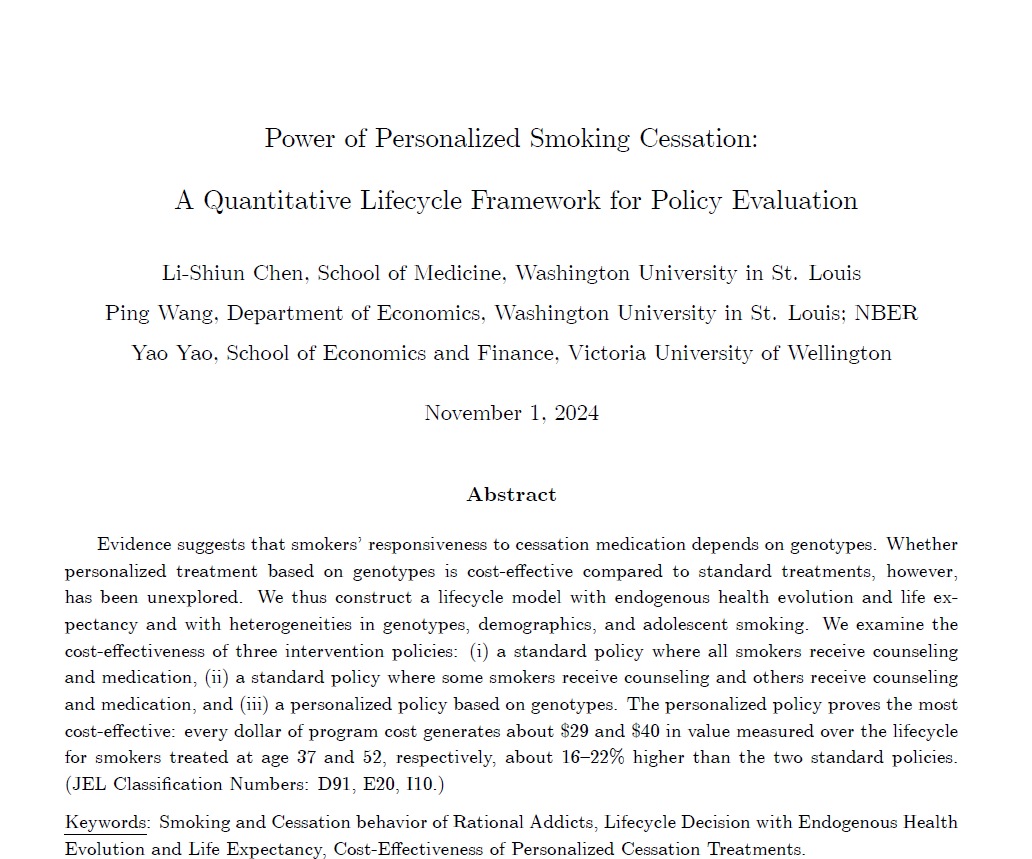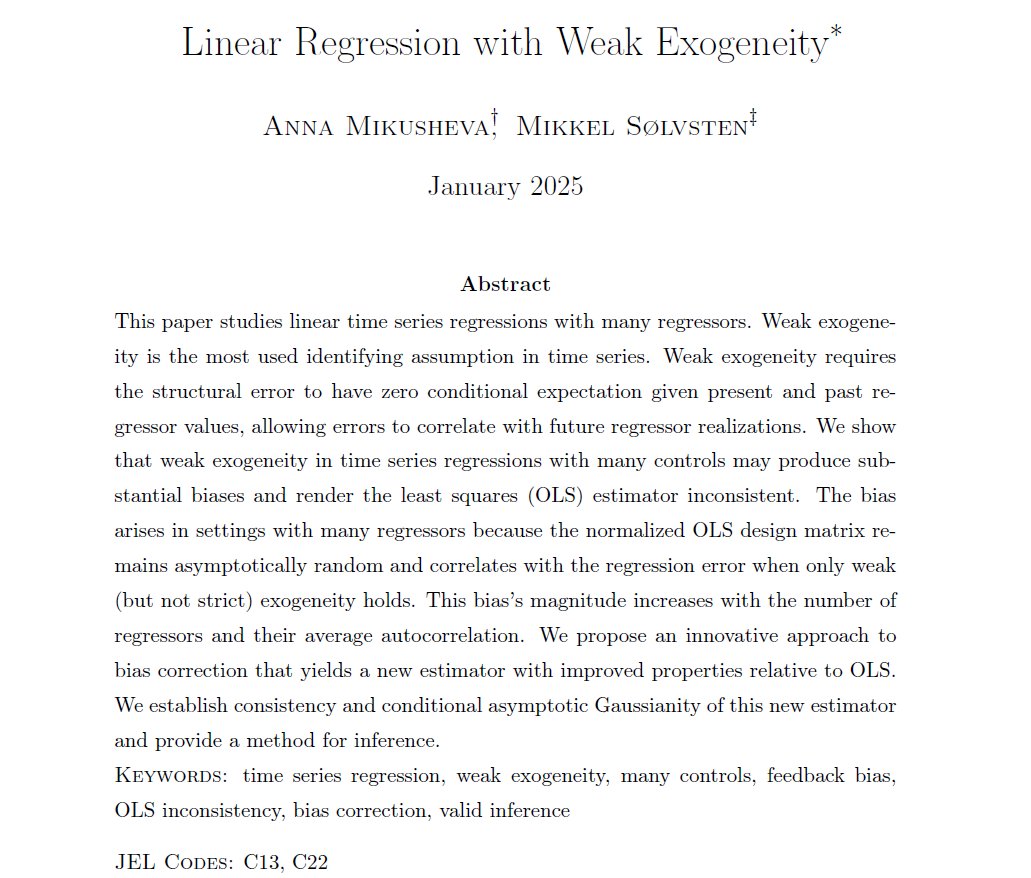
Quantitative Economics
@qe_editors
News from the editors of Quantitative Economics
ID: 1412589142609911811
https://qeconomics.org/ojs/index.php/qe 07-07-2021 01:49:25
182 Tweet
12,12K Followers
3 Following



A market so nifty where matchings do grow, stability wins — 88% so! Subjects play smart, strategies unfold, & median matchings overwhelmingly take hold. Echenique, Alejandro RC & Leeat Yariv show us this trick: stability reigns when the players are slick! econometricsociety.org/publications/q…
























